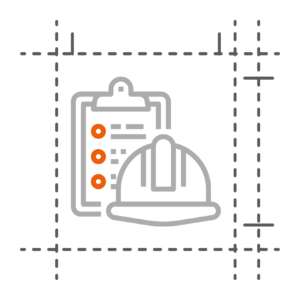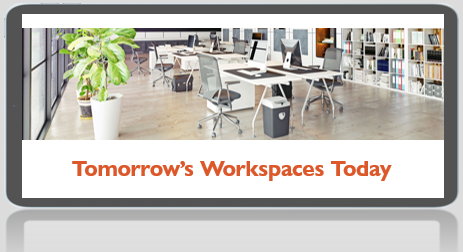Essential Office Move Checklist: A Comprehensive Guide for a Smooth Transition
The dynamic of all businesses changes over time, and sometimes you might find your staff don’t quite fit in your office space like they used to. With factors such as hybrid working taking precedence in today’s working world, there’s never been a better time to get thinking about your space.
An office moving process, especially for larger companies, can be stressful and time-consuming. A survey by E.ON found that moving premises is the second most stressful task that managers have to deal with. As a result, a colossal 78% of companies actually delay moving, opting to stay in inefficient, cramped and costly facilities just to avoid the stress of it all.
We’ve created an office move checklist, featuring best practices, to ensure your office move goes as smooth as possible.

Identify the need for the move.
The idea of a new office space can seem wonderful at first glance, but it’s important to establish the reasons behind the move. Ask yourself if your current lease is expiring, if you’ve outgrown your current space, or if you want to be closer to clients. Ensure that everyone understands the reason for the move since your office reflects your brand and is crucial to your team’s well-being.

Appoint a project lead and create a dedicated team.
To execute the plan effectively, delegate a project lead who is senior, a good listener, has budget management experience, and can make decisions and communicate well. Form a cross-departmental team to cover all requirements for the site and optimize the budget. The moving team should be responsible for the day-to-day running of the business and ensure a happier work environment.

Budget Planning
How much is your relocation project going to cost?
Having a clear budget is essential when investing in a change of scenery. Start by making a list of initial expenses, such as storage, furniture, internet, legal fees, waste removal, and agency fees. Involving the finance department can aid with effective budgeting and provide accurate cost estimations.
Discuss with staff members your office goals and create a wish list for your new workspace. Highlight what is liked/disliked about the current office and address any challenges currently faced. Bring up seating/communication issues or parking problems. Make sure to express what you need to be happy at work.
It’s important that you can ascertain the full costs of your office relocation before you begin. Sizeable costs can be misjudged – or missed entirely – just because you haven’t experienced a move before. You may find it beneficial to discuss your move with an experienced workspace relocation company who may be able to shed light on the full costs of your move!
Location scouting
When scouting for your ideal office, keep in mind three key factors: location, space, and layout. The location should consider accessibility to public transportation and the specific needs of staff. Space should be just right to avoid cramping or wasted space. Layout should adhere to staff needs and wants to ensure their well-being and morale.

Recruiting the right people
Consider hiring a project management service to help with your office move. They can take charge of IT installation, storage, and other details, potentially saving you time and reducing stress. Look for a reputable company to ensure a smooth transition into your new office.
Auditing
Relocating offices is a great opportunity to declutter, sort old files and get rid of redundant furniture and legacy IT equipment. There’s little point spending time/budget on moving anything you are not going to use.
Complete an audit to find out what personal and business storage assets you have. The audit will help you determine what you already have, what you really need, and identify ways to save space.
Performing an IT and data audit can help identify how and where your data is stored, and the procedures surrounding it. This could help save costs and enable a strong implementation of your IT strategy in your new workplace.
 Design: Space Optimization and Saving Money
Design: Space Optimization and Saving Money
Space is valuable, especially if you do not have much of it, so be sure to keep your floor plan in mind when making any interior decisions. Consider investing in modular furniture that can be reconfigured to suit a developing business. This will provide a longer life for such items, saving costs in the long run.
Consider sustainable practices for your new office layout, such as recycling/upcycling furniture and IT. Bring some greenery inside, listen to your staff, complete a site survey, and get a second opinion.
 Be Prepared
Be Prepared
When you’ve got your moving date and plan on announcing a move, use the who, what, why, where, when and how’s to provide clear information to employees. Take the time to address any concerns or upsets, and inform suppliers, clientele, banks, and pension providers. Prepare to update your contact details across websites and marketing assets.
 Moving Day
Moving Day
Create a detailed plan before moving day to give to staff, outlining key things such as where to pick up access passes and where their desk should be. Prepare moving packs for employees and use a system to easily find items when unpacking. Cancel rolling bills and ensure technology is installed.
 Post-Relocation
Post-Relocation
Firstly, congratulations on completing the office move!
Host an office party and thank those team members who drove the plan, as gratitude makes employees feel recognized and valued, and we’re sure they proved invaluable to the whole ordeal.
Yet, the move doesn’t end here – be sure to follow up with staff to ensure their satisfaction and resolve any issues that might have risen following this move.
Moving offices needn’t be so stressful, and at Crown Workspace we offer a variety of services that can make things seamless. From commercial relocations to storage options, we tailor our services to each unique project.
Want to talk about a potential office move? Get in touch with us today!
Related stories
Announcing that you’re going to move offices is a huge part of a smooth relocation process. Whether it’s a small to medium enterprise, or a larger multinational – getting it right is essential for both your staff and clients alike.
Hybrid working is now standard, making it imperative for companies to reconsider the spaces they are utilizing – as well as the ones they are not. Despite this, Resume Builder reports that 90% of businesses plan to have most of their staff back in the workplace by the end of 2024. Therefore it is crucial […]
With the average worker spending 90,000 hours at work in their lifetime, it is widely understood that creating an environment that fosters satisfaction and happiness pays dividends not just for staff, but for your organization’s productivity too.





















